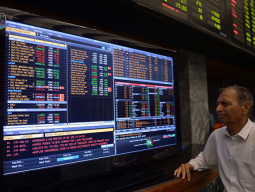
Rice exports from Pakistan have also suffered the same fate as receipts totalled only $1.84 billion during the financial year ended June 30, falling short of earnings made in the previous year.
According to data compiled by the exporters, rice valuing $1.84 billion was exported in 2014-15 against shipments worth $1.89 billion in the previous year. The main reason behind the reduced earnings was the fall in prices of the commodity, though export volumes rose.
In 2013-14, the price of Pakistani basmati rice stood at $1,300 per ton in the international market, but it dropped to $1,000 next year.
However, prices of Indian rice fell more sharply than Pakistan’s paddy. In 2013-14, the Indian rice was $150 expensive than the Pakistani rice, but next year, it became $100-150 cheaper than Pakistani rice.
As opposed to the $1,000 price tag for a ton of Pakistani basmati rice, the Indian basmati rice was sold for $850. Indian exporters pushed down the price to compete with Pakistani counterparts at a time of shrinking demand.
Fiscal year 2014-15 also proved bad for the farmers who struggled to cope with increasing prices of inputs, which ate into their profits.
In terms of volume, the country exported 3.7 million tons of rice in the last fiscal year compared to 3.3 million tons in the previous fiscal year.
“The increase in shipped volume is due to high sales of non-basmati rice, which has high demand in the international market,” said Taufeeq Ahmad, a rice exporter and former vice-chairman of the Rice Exporters Association of Pakistan (REAP).
Basmati vs non-basmati
Contrary to this, the export of basmati rice fell 9% to 680,000 tons in the last fiscal year. A year earlier, the country had exported 750,000 tons of basmati.
Pakistani basmati rice is in great demand in Europe, North America and the United Arab Emirates.
Of the total rice exports valuing $1.84 billion, the share of non-basmati varieties was $1.27 billion compared to shipments worth $1.05 billion in the previous year.
Non-basmati rice is mainly exported to Africa and China, which is becoming a major buyer of the commodity.
The exporters are anticipating good returns in the new fiscal year, believing that demand from Beijing will result in better prices for the commodity.
Shortcomings
Ahmed said the Indian government was giving incentives to the farmers but the Pakistani government was doing nothing for the promotion of its brands. The overvalued Pakistani rupee against the US dollar was also one of the reasons behind the high prices of Pakistani rice, making it uncompetitive in the international market.
“International buyers are demanding that Pakistani exporters match the Indian prices, but they are unable to do so due to high input costs,” he said.
He said Pakistani rice had great demand in the global market, but the exporters just need government’s support for marketing.
The Iranian market was also closed for the exporters due to sanctions, but the recent nuclear deal may open a new door, which is expected to give a push to the prices on the back of higher demand.
Published in The Express Tribune, July 18th, 2015.
Like Business on Facebook, follow @TribuneBiz on Twitter to stay informed and join in the conversation.
1723030748-0/Chloe-Bailey-(1)1723030748-0-405x300.webp)






















COMMENTS
Comments are moderated and generally will be posted if they are on-topic and not abusive.
For more information, please see our Comments FAQ